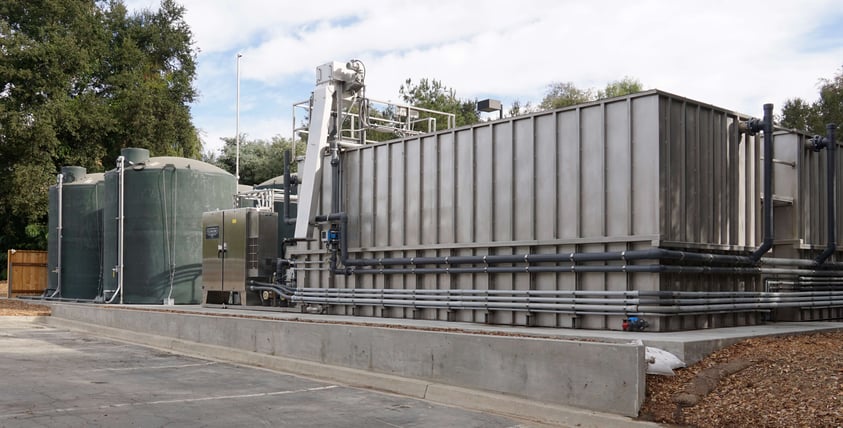Membrane Bioreactor
Author: Jay Jung. P.E.
Design: 2019 - 2020


Descanso Gardens (Gardens) is a world-renowned botanical and horticultural garden located just north of Los Angeles in the City of La Canada Flintridge, CA. The Gardens are host to tens of thousands of visitors a year who flock to the location to see its famous collection of local and exotic flora and historical landmarks.
The Gardens are operated by a non-profit guild (Guild) in partnership with County of Los Angeles Department of Parks and Recreations (LADP&R). The Gardens use on-site sewer collection, treatment, and disposal systems to treat the wastewater generated by the on-site restaurant facility and visitor restrooms called Van De Camp.
In 2012, a new treatment system was designed and installed by the County of Los Angeles Department of Public Works to replace the existing septic tank and leach field. The new system consisted of two new biofilters, three underground collection tanks, a tab chlorination system, a UV disinfection system, an ozone de-chlorination system, and three 35-foot deep seepage pits. In 2015 and 2016, the system experienced capacity issues and seepage pit structure failures that resulted in untreated wastewater inundating the seepage pits.
From these failures going forward, the Gardens were forced to collect and haul approximately 6,000 gallons per day of wastewater, incurring huge ongoing costs and negatively impacting visitors’ experiences. In Q3 2018, the Guild performed an evaluation of the system and determined that the 2012 system had structural failure in the seepage pits and was undersized for the Gardens’ peak flows and made a recommendation to replace the 2012 system.

The installation of a new, state of the art packaged Membrane Bioreactor (MBR) system provides a long-term solution for the Gardens. In addition to restoring on-site treatment capacity, the new package MBR system provides the opportunity to utilize the recycled water to irrigate the facility.
In January 2019, LEE + RO joined the design build team, which was led by John Robinson Consulting (JRC), to provide engineering design and construction phase engineering services. Fluid Resource Management (FRM) was the construction contractor, and JRC provided project management and onsite construction management.

LEE + RO’s design centered around the MBR technology, which produces Title 22-compliant tertiary (recycled water) effluent within a compact, modular footprint. The improvements designed by LEE + RO included:

The final location of the MBR unit was determined by evaluating the available space within the picturesque facility while maximizing the benefits of the existing elevations and hydraulic conditions of the site. The design team worked with Garden staff and RCH Studios (landscape architect and Facilities Master Planner) to provide a location that would take into consideration future expansion of the facility. LEE + RO determined that the southeast corner of the parking lot was the ideal location based on the available space, its proximity to existing electrical and plumbing infrastructure, and because the site elevations allow for use of a smaller recycled water booster pump. This position reduced the recycled water pump size requirement resulting in a reduction in the Garden’s operating costs and the facility’s carbon footprint.
LEE + RO coordinated with RCH Studios and Sweeney + Associates (irrigation design consultant), who were contracted by the Guild for design of the landscaping and irrigation system, respectively to provide landscaping and architectural features to integrate the industrial looking treatment works with its carefully curated surroundings—a textural and visual contrast that not only pays homage to the Gardens’ history, but to lay bold claim to its future, too.
Through innovative thinking and partnering with JRC, LEE + RO’s engineers were able to provide a reliable, cost-effective wastewater treatment system that is not only helping the Gardens achieve their sustainability goals of reducing water consumption (estimated at 2,200,000 gallons per year through the use of Title 22 recycled water) and electrical usage but also by eliminating the costly hauling of wastewater from the facility. The new system will provide 30 plus years of uninterrupted service.
LEE + RO is proud to be a part of this successful project and make contributions to keep a beloved local landmark operating sustainably while being able to fulfill its core mission of dazzling thousands of visitors a year through the beauty of nature.